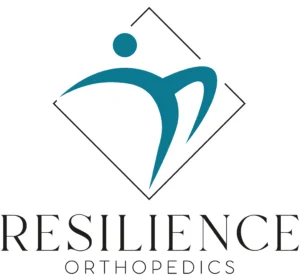Table of Contents
Walking through the days after an operation (especially knee replacement surgery) often feels like trying to dance on ice. It’s so easy to slide into problems if you’re not careful.
However, guiding your knee to a happy, pain-free future doesn’t have to be a huge stress.
Here are the key steps for a smooth recovery:
- Implement a wise and gradual exercise routine.
- Pay attention to the feedback provided by your knee.
- Adhere rigorously to the prescribed post-surgery plan.
- Be cautious about returning to work promptly.
- Postpone resuming driving until adequately recovered.
In this article, we will delve deeper into these pivotal steps and let you know what not to do. We will help facilitate a smooth transition from the operating room through to a robust, pain-free future.
So, without further ado, let’s begin this knee-friendly journey and learn the top 5 mistakes after knee replacement surgery!
Book a Consultation with Dr. Pamela Mehta, MD
The Best Orthopedic Surgeon in San Jose
Dr. Mehta is a board-certified orthopedic surgeon who can help you recover from your joint condition. If you:
- Are Suffering From Pain and Mobility Issues
- Need Orthopedic Assessment and Advice
- Want Treatment From a Top Orthopedic Doctor
We Can Help
Mistake #1 – The Exercise Conundrum
Let’s waltz through the maze of post-surgery workouts! Where one misstep might have your knee raising a white flag in surrender!
Don’t Be Too Gentle with Your Movements
The instinct to protect yourself after knee surgery by limiting its movement is understandable. However, it is pivotal to recognize that an overly cautious approach can lead to stiffness.
Adequate, mindful movement is indispensable to facilitate a sturdy recovery.
Implementing Structured, Gradual Mobilization
Incorporate gentle, doctor-approved exercises into your daily routine. This ensures that the knee flexes its way to recovery without any sign of pain or stiffness. Structured, gradual mobilization is your key to unlocking a smooth recovery.
Don’t Over-Do It
If you’re enthusiastic about regaining fitness – that’s amazing! But, unbridled enthusiasm can unintentionally worsen knee swelling and pain.
It may even lead to sensations like clicking in the knee, which can be caused by irritated tissues or joint stiffness during recovery.
Thus, it is imperative that your zeal is balanced with mindful moderation. This safeguards the integrity of your recovery process.
Balanced Exercise Regime
Balance exercises with intermittent rest and keep a vigilant eye on the knee’s response. This allows for a structured, injury-free ascent toward complete recovery.
Remember, the journey back to a buff knee should be a steady climb, not a precarious leap!
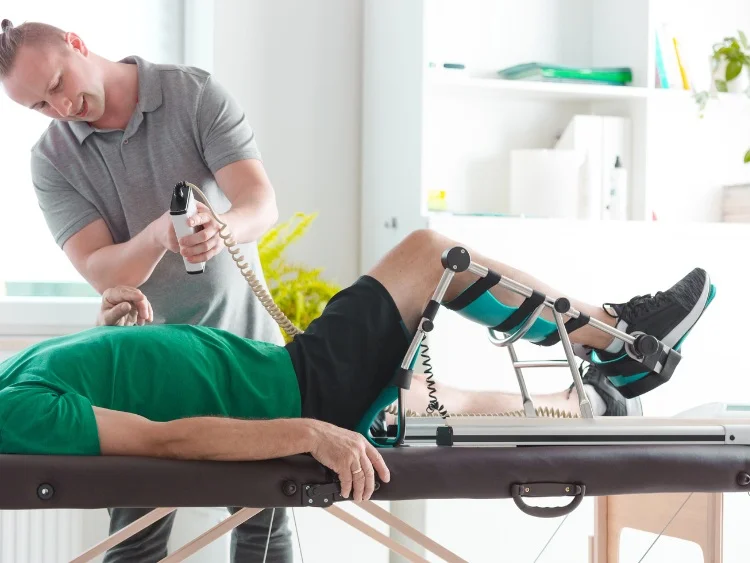
Don’t Abandon Your Knee Exercises
It is crucial to acknowledge that the necessity for structured exercise endures even after you’re done with your physical therapy.
The termination of formal therapy should not signal you to completely stop your dedicated exercise routine.
Keep your knee engaged with a tailored exercise routine, even post-therapy. As it guarantees continued mobility and strength.
It’s like providing a constant dose of vitality to your knee. This ensures that the operated joint doesn’t end up suffering from any other knee conditions.
Don’t Get Back to Work Too Quick
The lure of the workstation might be strong, especially when knee recovery is feeling a bit too lengthy and your leave is running out. You might be tempted to get back to work early and start earning again.
However, taking a not-fully-recovered knee back to the grind can spell disaster for your healing journey. It’s not worth it!
Work-smart, Not Hard
Returning to work? That means carefully balancing productivity while safeguarding your knee from pain and swelling.
Flexible scheduling, remote working, or modified duties could be your knights in shining armour here!
Don’t Start Driving Too Soon After Knee Replacement
The appeal of returning to driving can be significant. Yet it is important to evaluate whether the knee is ready to manage this activity. You need to make sure you’re not posing a risk to safety or recovery!
Before you buckle up, ensure that you’ve received the green light from your doctor. Remember that moderation, consistency, and structured progression are crucial in your post-op journey.
Let’s ensure that the knee, fresh from its surgical odyssey, enjoys a smooth recovery!

Mistake #2 – Ignoring Red Flags During Surgical Recovery
Recovery from surgery in the knee is a time we hope will be trouble-free. We take every precaution to make sure that your new knee is healthy and that you get on your back on your feet as soon as possible. But occasionally, your freshly improved knee may act up, sending warning signals.
Recognize these signs so that you know when to contact your doctor. This can significantly impact your recovery journey.
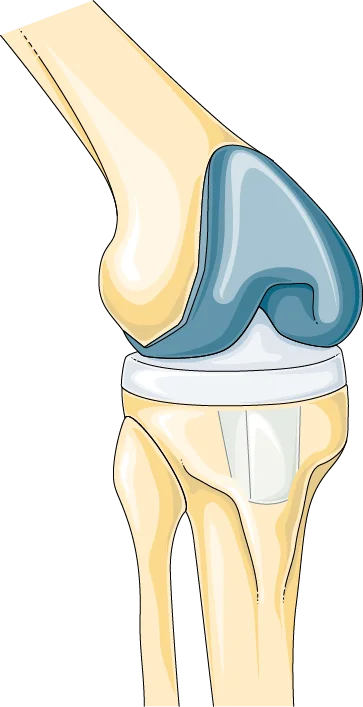
3 Important Red Flags After a Knee Replacement
1 – Swelling: How to Tell Normal from Worrying
Swelling is completely normal after surgery – you have just put your joint through some major changes. However, recognizing when it’s normal and when it’s a big red flag is crucial.
In the first week, your knee will swell up quite severely in reaction to the surgery. Over the next few weeks and months, it should gradually improve, with mild swelling completely normal for up to 6 months after your operation.
However, if your swelling gets worse after the first week, or you don’t see any improvement at all, this is a red flag.
Persistent or significant swelling is your knee’s way of saying, “Hey! Something’s not quite right down here!” If you see either of these symptoms, get in touch with your knee surgeon.
2 – Pain: Navigating Between Expected and Excessive
Some degree of knee pain is anticipated after replacement surgery. However, intense or escalating pain is certainly not to be expected.
It’s essential to discern between the expected, manageable pain and the kind that makes you reconsider your life choices.
Here are some red flags when it comes to pain:
- Sudden pain after a pain-free period. This could be a sign that part of the new joint, or the bone surrounding it, has become damaged.
- Worsening pain in the days after the procedure. Pain is to be expected after the replacement, and you will be given painkillers. However, if the pain keeps getting worse and worse, pick up the phone.
- Pain and your knee giving way. Any pain associated with your knee feeling like it’s giving way could point to some misalignment in your new joint. This instability can wear out the prosthetic quick, so get in touch if your knee doesn’t feel stable.
- Pain months or years after a knee replacement. This could be a sign of a joint infection or a failure of the prosthetic. It’s time to get a knee surgeon to examine it as well as some x-rays.
- A painful, swollen, red-hot knee. Your knee will be sore and swollen right after the procedure, but if it swells up and is painful and hot, it’s time to get it seen as soon as you can. This could be a joint infection, which is serious.
3 – Skin Changes: Identifying Potential Infection
Redness and warmth around the surgical site can sometimes decide to make an appearance after surgery. This is normal in the days after surgery.
However, if they overstay their welcome or dramatically make an entrance, that’s a red flag. It’s a tell-tale sign that your knee might be hosting some unwelcome guests, such as Staph, MRSA, or Strep bacteria.
We do everything we can to prevent skin or joint infections through sterilization, but there’s always a chance bacteria will get into your wound. If your knee gets red and hot around the wound, get in touch with your knee doctor.
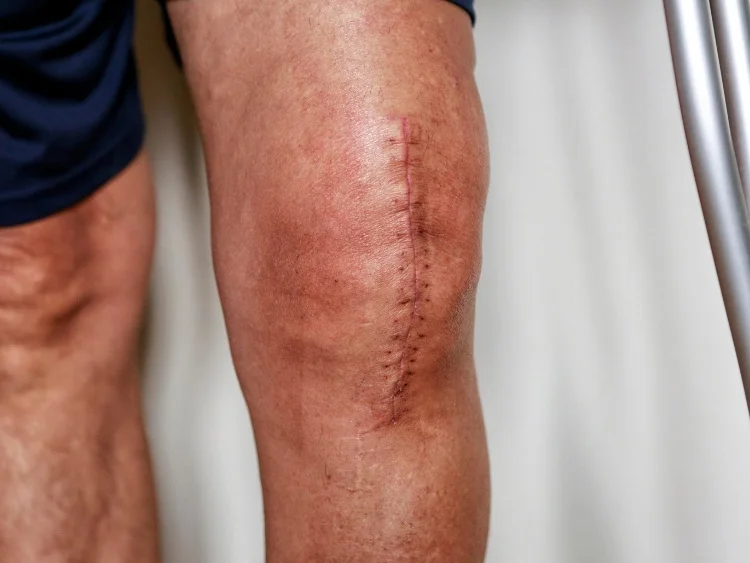
Mistake #3 – Not Staying in Contact With Your Knee Doctor
Now, if you recognize a red flag you don’t need to panic! You’ll be better equipped to deal with potential issues if you can remain calm, composed, and in touch with your doctor.
Your knee surgeon should be your first port of call for any unexpected knee shenanigans. If you work with Dr. Mehta, you’ll be followed up through the whole recovery journey, giving you a chance to alert her at the first sign of a problem.
Documenting Your Recovery
Make sure to keep a detailed account of your symptoms before reaching out to your doctor. This, along with the progression of symptoms and any accompanying issues becomes invaluable.
Did the swelling start after a particular exercise?
Does the pain get worse at night?
What makes the pain feel better and worse?
These specifics enable your doctor to decipher the issue and get back to you as soon as possible, reassuring you if the symptoms are normal.
Ready to Recover?
Take the first step in getting back to your normal self, and book an appointment with Dr. Mehta today.
We’re ready when you are!
Keeping in Touch
Establish frequent check-ins and open communication channels with your doctor. This ensures that no symptom goes unnoticed or unaddressed. Your knee surgeon should schedule regular post-op check-ins – this is your chance to keep them informed of your progress.
Obviously, your doctor isn’t expecting daily letters. But, a regular update on your progress and any peculiarities helps to fine-tune your recovery journey.
Your doctor isn’t merely a healthcare professional; they are your co-pilot. They make sure you arrive safely at the end of your journey with a strong, healthy knee.
So, make sure you get in touch with your knee doctor as soon as you see a red flag!
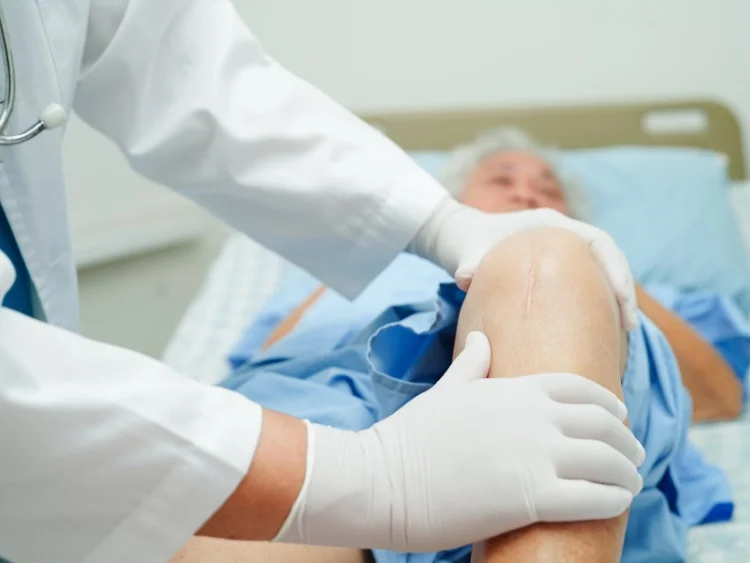
Mistake #4 – Discarding the Post-Operative Plan
Navigating through the recovery path post-knee replacement is an adventure of its own, filled with potential pitfalls and moments of joy.
Think of your post-operative treatment plan as a treasure map. It will lead you steadily towards the goal of optimal mobility and minimal pain.
Thinking about ditching the plan or ignoring crucial steps? You’re putting yourself at risk of complications. Let’s dig a bit deeper.
Bidding Farewell to Assistive Devices Too Soon
Assistive devices like crutches and walkers offer more than just physical support. They are dependable aids that reduce the risk with each step.
In the end, the goal is to regain independence from these devices. So, a gradual transition helps prevent pain and setbacks. Trying to walk without them before you’re ready could lead to disaster.
Therefore, it’s crucial to use them until you’re confidently and independently mobile.
Ghosting the Physical Therapist
A physical therapist is your best friend when recovering from a knee surgery. Following their advice will make the difference between a successful recovery and your knee being a pain in the… knee.
Disregarding their advice or skipping appointments should never be a choice.
Your physical therapist ensures you don’t tumble into the abyss of setbacks. So, follow their well-crafted treatment plan to help with your unique healing journey.
Neglecting Your Wound
The surgical wound – a stark reminder of your battles in the operating room. If you want a pain-free life, then pay great attention to your wound care.
Protect your wound from potential irritants and infectious by following your wound care plan. Carefully track its healing progress, and change the dressings in a timely manner.
By doing this you can transform your scar into a meaningful symbol of your recovery journey.

Mistake #5 – Rushing Back to Your Normal Life
Eagerly plunging back into your normal life might appear tempting. But let’s pump the brakes and explore why a gentle, gradual re-entry is the better way.
Being Cautious About Your Return to Work
Returning to work after knee surgery can bring up a lot of feelings. You might be happy to get back to your routine and see your coworkers, but it’s really important not to rush things.
If you push yourself too hard too soon, you might end up hurting your knee again. To plan a smooth and successful journey back to your work life, take care to go easy on your knees.
Start slow, with part-time or flexible hours if possible, and make sure your work area is set up to help your knee heal properly. Most employers will take your recovery into account, and you may be able to take part in lighter duties at first.
Listen to your body and take breaks when you need them, so your return to work is healthy and safe.
Taking it Slow With Your Hobbies
Imagine your knee, fresh out of surgery, trying to hop back into daily activities like driving, sports, or running up the stairs. The quicker you rush back into these, the more risk there is of causing a permanent injury!
You should treat your knee with care to avoid any missteps that might lead to pain or injury. If you rush back into your hobbies, you might prevent yourself from being able to do them in the future.
Ease back into your routine with a slow and steady approach. Whether it’s getting behind the wheel or engaging in hobbies, ensuring your knee is ready is vital.
By paying attention to how your knee reacts – you support its recovery without additional setbacks. Thus a gradual return to your activities ensures a smooth transition from recovery to active life.
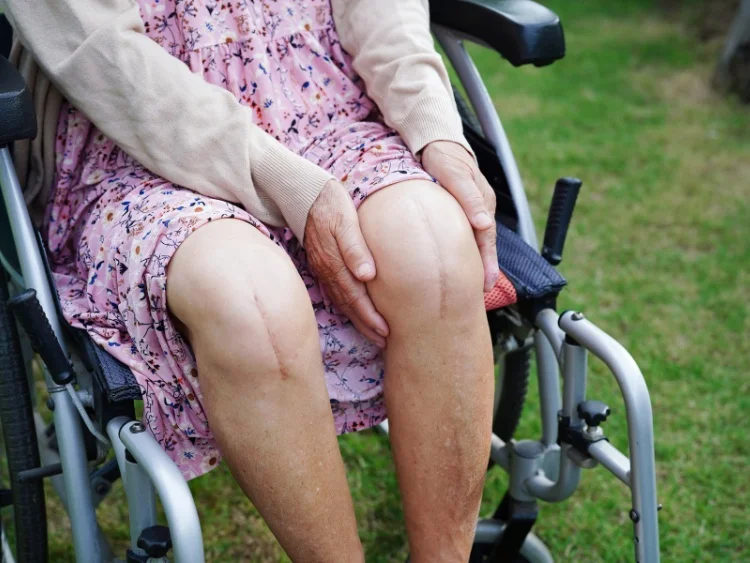
Conclusion
To avoid the common mistakes after knee surgery, you need to walk the line between adherence to professional advice and tuning into your body’s signals.
A blend of patience, carefulness, and communication will ensure your new knee enjoys a joyous journey ahead!
Remember, the path to recovery isn’t a sprint, but a leisurely, deliberate walk in the park. And your doctor is there to stroll with you every step of the way!
